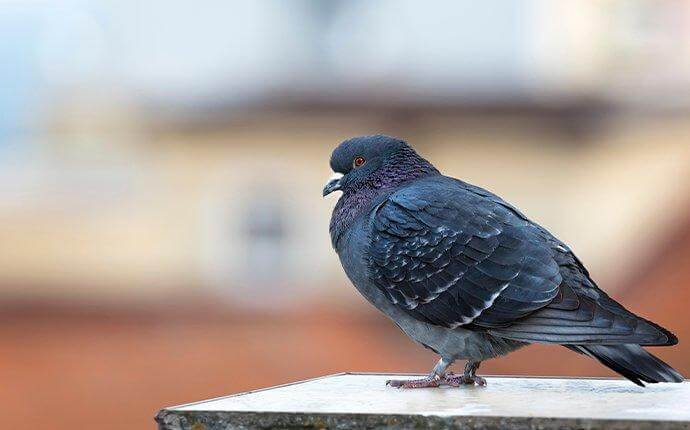Are you struggling to get rid of pesky pigeons that just keep coming back? Have you tried various methods, but nothing seems to be working? There are effective pigeon control methods out there that can help you get rid of pigeons for good. This guide will walk you through some of the most reliable control methods for pigeons.
8 Pigeon Control Methods That Really Work
1. Birth Control
While many solutions have been proposed to address the pigeon problem, birth control is the best. Using specially designed bird feed that contains a contraceptive agent, the pigeon population can be effectively controlled without harming the birds. This approach is not only humane but also highly practical, as it does not require the capture or relocation of the birds.
The pigeon control by OvoControl has proven to be one of the most effective. It contains a specially designed bait that the pigeons readily consume, and the contraceptive agent in the bait prevents the eggs from hatching.
The disadvantage of using birth control is that the results may not be immediate since it focuses on reducing the fertility rates in the birds. However, once this occurs, the population will slowly decrease over time until a more manageable level is achieved.
2. Natural Predators
Like other prey, pigeons are naturally afraid of predators and this can be used to control their numbers. Introducing hawks, owls, and falcons, which are the common pigeon predators, deters them from frequenting those areas. This method is particularly effective in areas where pigeons have become a nuisance, and other control methods have proven ineffective. It provides a long-term, natural, and effective bird control solution.
3. Installing Roosting Boxes
This method addresses the root cause of the pigeon problem: the lack of suitable roosting areas. It involves the setting up of boxes to serve as alternative roosting areas for pigeons. These boxes are designed to mimic natural nesting sites, providing a safe and comfortable environment for the pigeons.
4. Roost Modification
Roosting modification is an age-old method of controlling certain species of birds that have become a nuisance to humans.
It involves identifying a potential roost site and then modifying the environment in such a way as to make it unusable or undesirable for the target birds. Some of these include:
- Installing bird slopes
- Clearing off bushes, trees, or other vegetation around the roost site.
- Installing bird wire.
- Covering potential perching sites with spikes
- Trimming back foliage in the area to reduce cover for birds.
The goal is to make the site uncomfortable for birds, so they will move on and find a new roosting area.
5. Using Physical Deterrents
If you’ve already identified a roost site, but the birds aren’t leaving, it might be time for some physical deterrents.
Bird netting is the perfect solution for gardens and buildings. It provides a physical barrier that prevents birds from entering. The netting is lightweight and comes in a variety of sizes and colors if you want to maintain the aesthetic of the area.
Installing spikes on ledges or roofs can also discourage bird roosting, as it makes the area uncomfortable to land.
6. Ultrasonic Sound Devices
Ultrasonic sound devices emit high-frequency sound waves that are inaudible to humans but uncomfortable for birds, including pigeons. When pigeons hear these sounds, they perceive them as a threat and instinctively avoid the area. They are easy to install, and maintenance is minimal, making them a cost-effective and practical solution for controlling pigeon populations in urban areas.
Unfortunately, sound devices may not be suitable for all situations, like factories and noisy settings.
7. Removing Food and Water Sources
Pigeons will be drawn to areas where they can easily find food and water. To reduce the attractiveness of an area, it is necessary to eliminate any sources of food and water that pigeons may be using. This can include removing bird feeders, covering garbage bins, and cleaning up spilled bird seed and pet food.
If you have birds that you feed on your farm, consider smaller bird feeders to keep pigeons out. Pigeons are large birds and can be kept out of most bird feeders if they are properly sized. And if you have a pond, cover it with netting or fencing.
8. Visual Deterrents
Pigeons are intelligent birds, but they can definitely be outsmarted. To prevent them from flocking onto your property, all you need is a simple visual deterrent. Something that catches their eye and makes them think twice before landing.
Hang bright Mylar tape or fill the air with sleek balloons of varied shapes and sizes. The sight of these alien objects creates an effective optical illusion and tricks the birds into thinking they’re facing off against their natural predators: hawks and other large predators.

